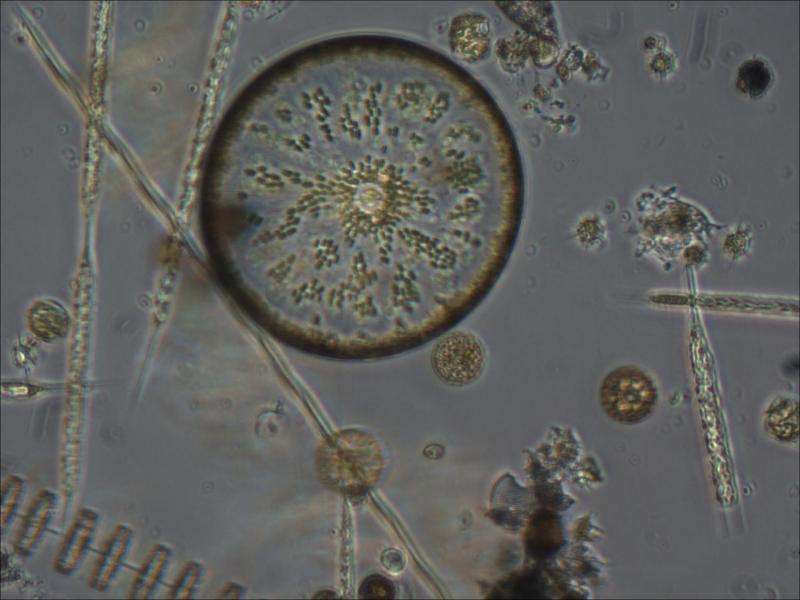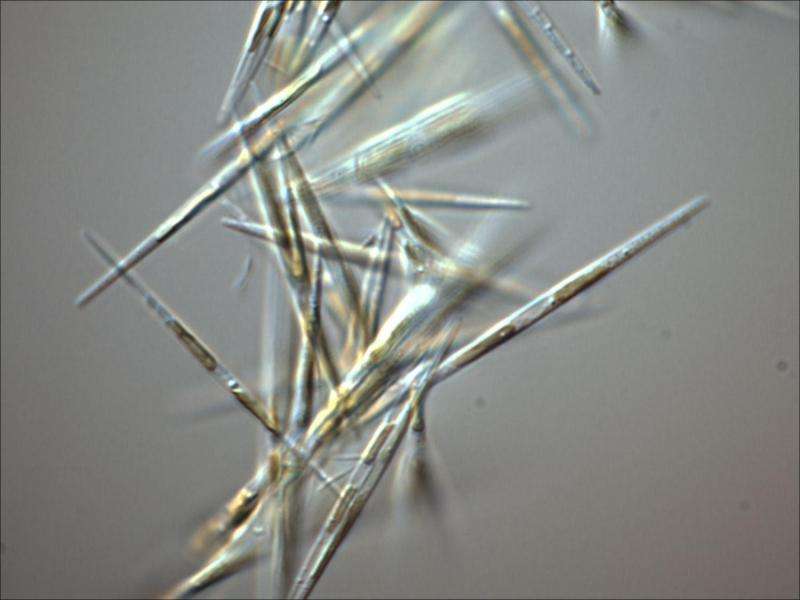Protein identified in certain microalgae changes conversation about climate change

Adrian Marchetti and his team of oceanographers at the University of North Carolina at Chapel Hill have identified —for the first time—that a protein called proteorhodopsin could allow a major group of phytoplankton to survive in iron-limited regions of the ocean.
In the high-profile science behind climate change, the work has implications that reach far and wide, not only on how ocean modelers determine the overall amounts of carbon dioxide taken up by oceans, but potentially the pace at which our Earth's atmosphere has warmed over the last century.
Phytoplankton are tiny organisms that are critical in offsetting climate change because they undergo a process called photosynthesis, whereby they absorb large enough amounts of heat-trapping carbon dioxide to cool the Earth's warming environment while releasing much of oxygen we breathe. However, photosynthesis needs iron to occur. If there is limited iron in these regions, which can account for 40 percent of the ocean, it is critical that these phytoplankton find a way to stay alive.
"Without the existence of these proteins that could help phytoplankton cope in these stressful environments, the phytoplankton diversity in many regions of the ocean would be much lower, in particular by reducing large phytoplankton such as diatoms that are known to take up a lot of carbon dioxide, thus possibly accelerating the pace of a warming planet," said Marchetti, assistant professor of marine science at UNC-Chapel Hill.
The work has implications for how ocean modelers determine the overall amounts of carbon dioxide taken up by the oceans, which is typically performed through oxygen-based measurements. Although Marchetti and his team do not definitively know yet whether this protein can actually result in carbon dioxide uptake in these phytoplankton, called diatoms, they do know that the proteorhodopsin would unlikely result in generating oxygen, which could alter the carbon-dioxide uptake to oxygen production ratio in iron-limited regions of the oceans.

"This discovery resets some longstanding ideas for how we measure and understand carbon cycling on our planet," said Marchetti. "These diatoms are teaching us a lot about how to be more accurate in our estimates and predictions about a warming climate."
Provided by University of North Carolina at Chapel Hill




















